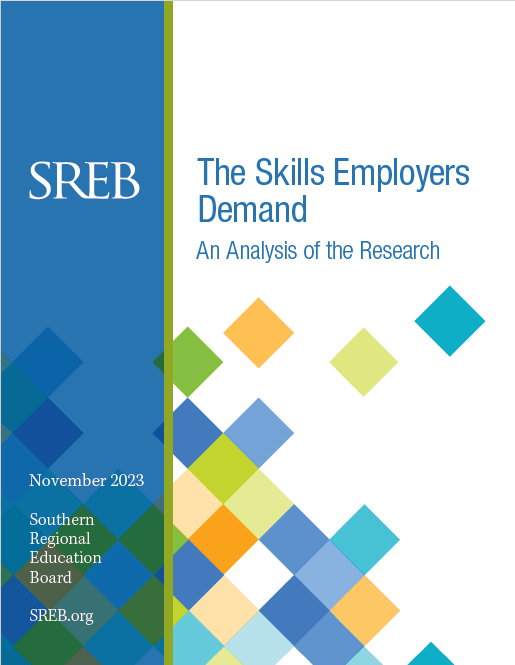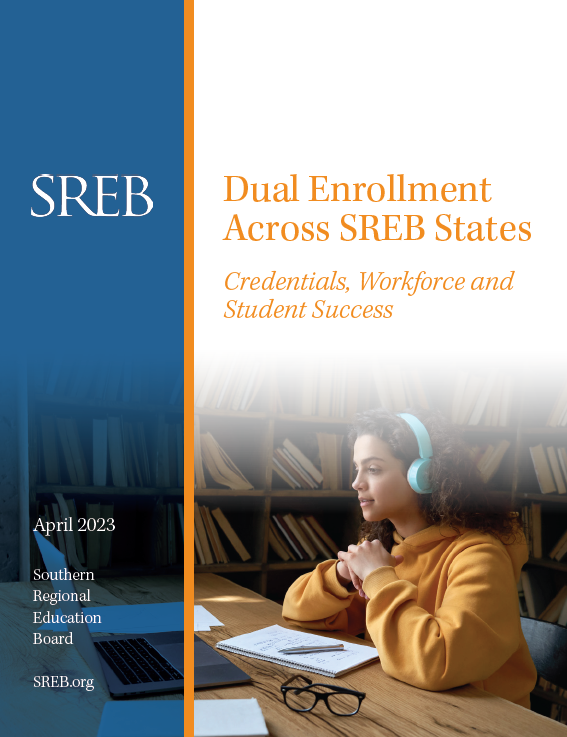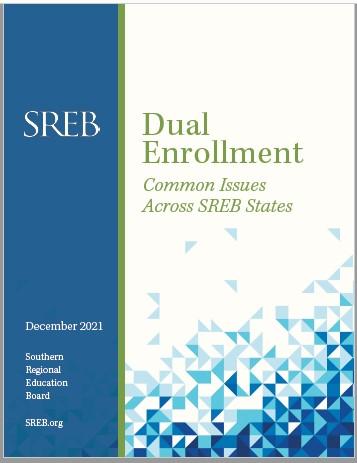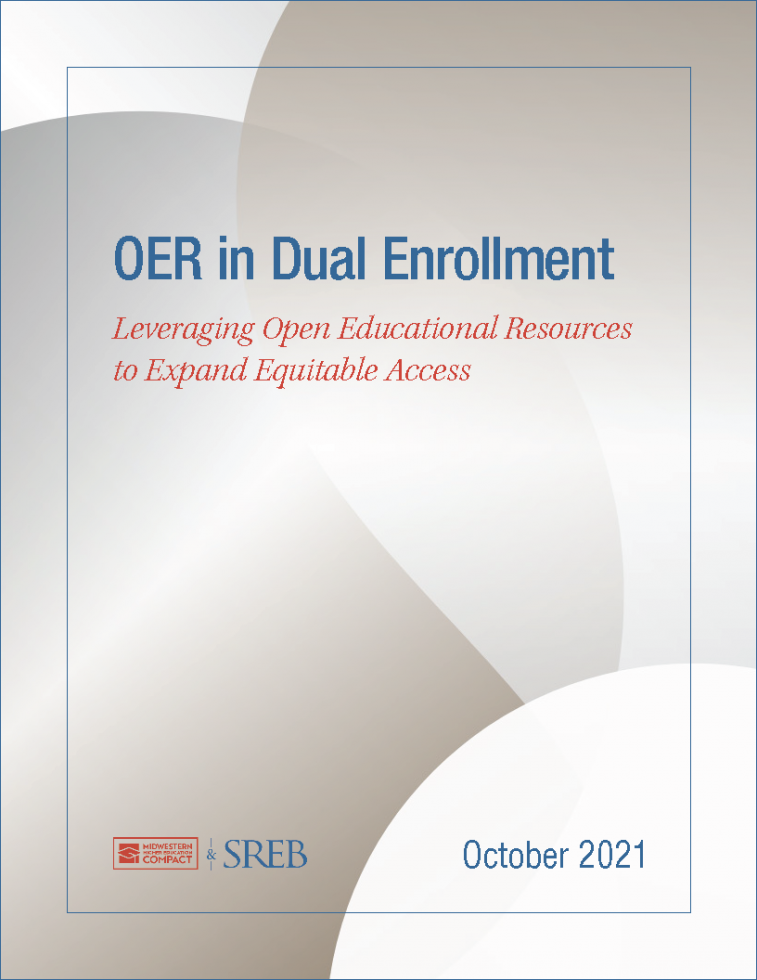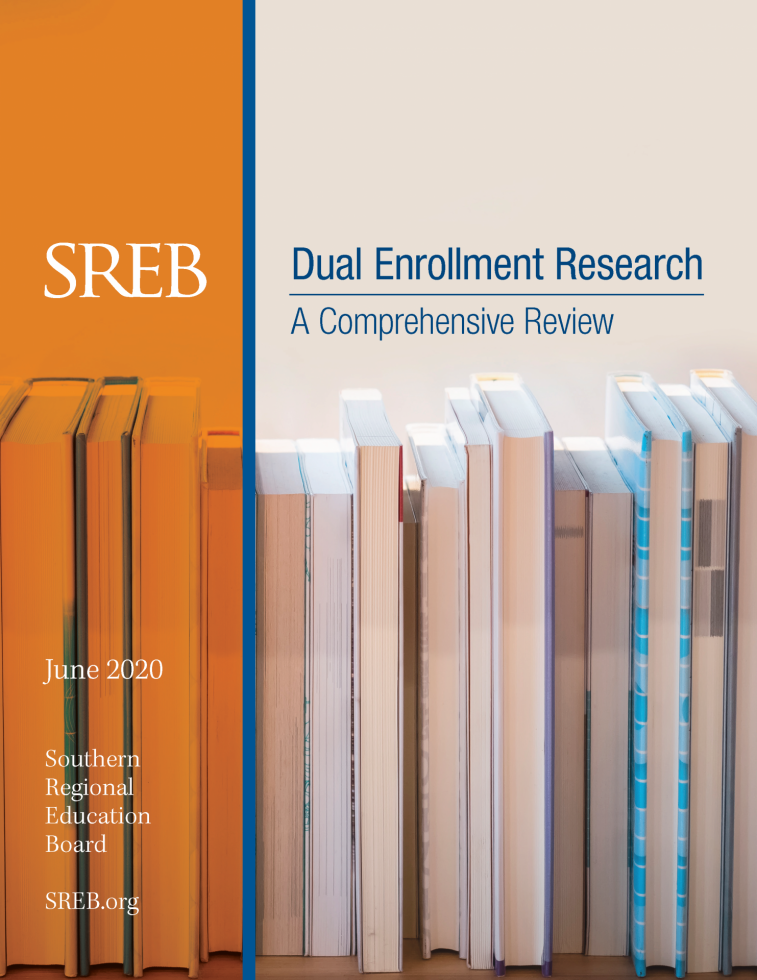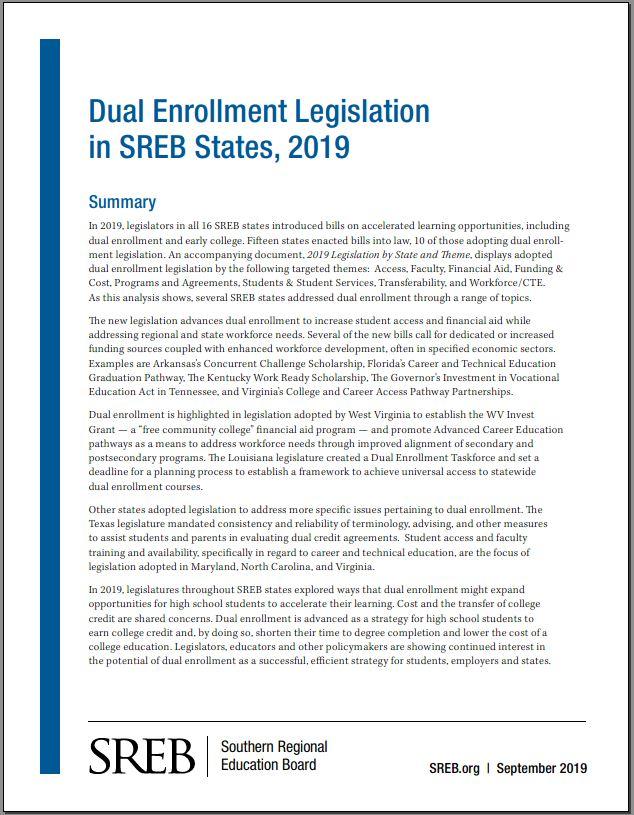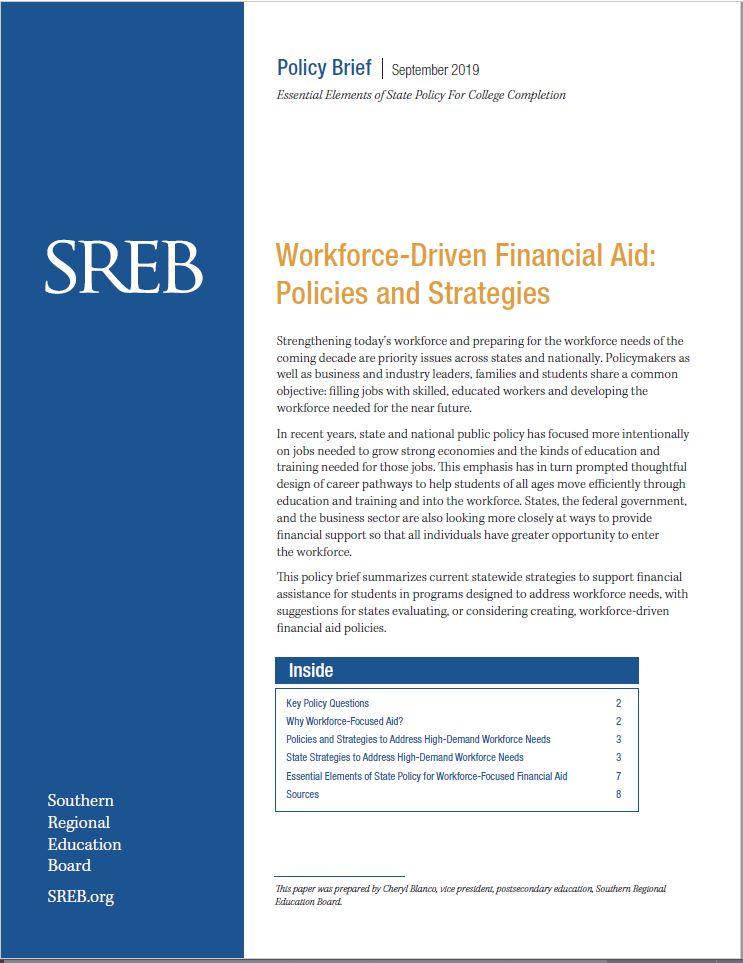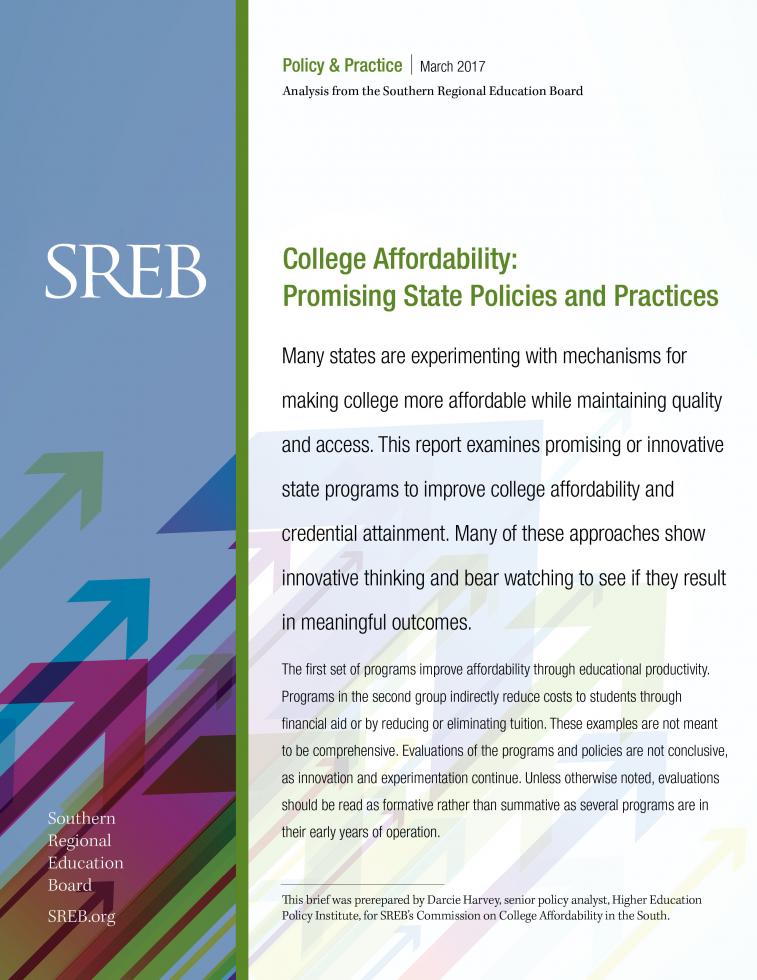Topic: Dual Enrollment
Dual Enrollment
A head start toward college and career
Earning college credit in high school can make postsecondary credentials more affordable for families and states. Dual enrollment and other accelerated options can also help prepare high school students for the rigor of the campus environment and the success skills central to careers.
SREB publishes data and state policy on dual enrollment and brings together policymakers from many arenas to address issues such as cost, equity and funding.
SREB Dual Enrollment Initiative
and Advisory Panel
SREB’s Dual Enrollment Initiative is a multi-year project to help states tackle tough issues surrounding dual enrollment, including cost and equity. Learn more >
The Skills Employers Demand
An Analysis of the Research
This report reviews the research on non-technical skills to identify the success skills employers most often seek. It summarizes relevant studies, skills gaps and credentialing to help policymakers, educators and businesses align efforts to prepare students for the workplace.
Dual Enrollment Across SREB States
Credentials, Workforce and Student Success
Dual enrollment holds the promise of accelerating students’ path to postsecondary education and in-demand careers. College courses offered to high school students for both high school and college credit are available in all SREB states. This report summarizes the work of the SREB Dual Enrollment Initiative to date, lays out its agenda for 2023, details dual enrollment programs in Southern states and lists 2022 legislation on the topic.
Dual Enrollment Can Boost Students Toward Credentials for Careers
Report offers ideas for states to advance their programs
Dual enrollment holds the promise of accelerating high school students’ route to postsecondary education and in-demand careers. A new report from the Southern Regional Education Board highlights promising programs to help states realize that potential.
Dual Enrollment Across SREB States: Credentials, Workforce and Student Success spotlights how states are addressing which students have access to the courses, how much they cost and how they help students earn valuable credentials.
Dual Enrollment
Common Issues Across SREB States
All SREB states have programs that allow high school students to take college courses for credit, and most have passed dual enrollment legislation in recent years. This report outlines key issues across the South and details how each state addresses them: student access, eligibility and cost, program quality, funding, and data reporting. It also summarizes the work of the SREB Dual Enrollment Initiative through 2021 and frames its work going forward.
New report aims to bring free textbooks to more dual enrollment students
Open Education Resources for Dual Enrollment
Open educational resources can open the door to dual enrollment for students who want a head start on college but cannot afford the high cost of college textbooks.
To help states and colleges create and use more open classroom materials, a new report from the Southern Regional Education Board and the Midwestern Higher Education Compact offers case studies and recommendations.
OER in Dual Enrollment
Leveraging Open Educational Resources to Expand Equitable Access
The number of high schools offering dual enrollment or concurrent enrollment courses has grown significantly over the past decade. However, gaps in student access and participation persist. This report from SREB and the Midwestern Higher Education Compact examines how the use of open educational resources, or OER, can make dual enrollment courses more cost-effective and increase college access for more students. The report provides an overview of policies across 50 states and recommendations on OER adoption and usage.
Dual Enrollment Research
A Comprehensive Review
Part of the ongoing work of SREB’s Dual Enrollment Initiative, this comprehensive review is intended to help policymakers better understand what the research tells us (and what it doesn’t) about dual enrollment. The research analyzes more than 500 journal articles, master’s theses, doctoral dissertations, web documents and books from 1959 to 2019.
Definitions
Dual Enrollment, Dual Credit, Concurrent Enrollment and Joint Enrollment
A number of different terms describe programs that allow high school students to earn college credit. And states and organizations define them in different ways. SREB staff compiled these definitions for its Dual Enrollment Advisory Panel. September 2019
Dual enrollment
Southern Association of Colleges and Schools Commission on Colleges: Courses taught to high school students for which the students receive both high school credit and college credit. Includes early college, dual credit and concurrent enrollment.
New England Commission of Higher Education: Programs allowing high school students to enroll in courses for which college credit is offered; also known as concurrent enrollment programs or dual credit programs.
U.S. Department of Education: High school students earning college credits for courses taken through a postsecondary institution; includes dual credit, concurrent enrollment, or joint enrollment. Credit for courses may be earned at both the high school and college level simultaneously or only at the college level.
Federal Acts – Every Student Succeeds Act and Perkins V: A dual- or concurrent -enrollment program is offered by a partnership between at least one institution of higher education and at least one local educational agency through which a secondary school student who has not graduated from high school is able to enroll in one or more postsecondary courses and earn postsecondary credit that: (a) is transferable to the institutions of higher education in partnership and (b) applies toward completion of a degree or recognized educational credential as described in HEA 1965.
Arkansas: A high school student’s enrollment in postsecondary coursework for college credit only.
Kentucky: A student is enrolled in a high school and postsecondary institution simultaneously.
Tennessee: A program that allows a student to enroll in postsecondary courses for high school and postsecondary credit.
Dual credit
Higher Learning Commission: Courses taught to high school students for which students receive both high school credit and college credit.
Kentucky: A student receives credit from both the high school and postsecondary institution in which the student is enrolled upon completion of a single class or designated program of study.
Tennessee: A postsecondary course taught in a high school by certified secondary instructors… and which prepares a secondary student to sit for a dual credit challenge exam; students who pass the challenge exams earn college credit accepted by all Tennessee public and private non-profit postsecondary institutions.
Concurrent enrollment
National Alliance of Concurrent Enrollment Partnerships: The subset of dual enrollment courses taught by college-approved high school teachers.
Arkansas: Enrollment of a high school student in a college course taught on a high school campus (or, in selected cases, on the college campus or by distance/digital technology) for both high school credit and college-level credit.
Kentucky: A dual credit course taught by a college-approved high school or area technology center teacher at the secondary school during the regular school day.
Joint enrollment
Tennessee: An arrangement between a high school and a postsecondary institution wherein a student enrolls in postsecondary classes while attending high school. The student receives credit from only one of the two institutions.
Open Educational Resources in Dual Enrollment Webinar Series
On-Demand Recordings Available
This three-part webinar series explored how using open educational resources in dual enrollment can increase access to postsecondary education for more students.
Sessions covered:
Equitable Access and College Affordability
The Cost of OER and Return on Investment
Making a Case for Student Success: OER in Dual Enrollment and CTE
Dual Enrollment Legislation in SREB States, 2019
This report summarizes 2019 legislation related to dual enrollment by state. It also displays dual enrollment bills by these themes: access, faculty, financial aid, funding and cost, programs and agreements, students and student services student services, transferability, and workforce or career and technical education
CTE Dual Enrollment That Works
“Some of our students have never set foot on a college campus,” says Jonathan Phillips, director of the DeKalb County Technology Center in Rainsville, Alabama.
That’s a point of pride at DCTC. Although the center is known for providing quality career and technical education courses and industry credentials, it also offers academic courses that satisfy graduation requirements and dual enrollment courses that put students on the fast track to credential and degree attainment.
Workforce-Driven Financial Aid: Policies and Strategies
Essential Elements of State Policy For College Completion
The rapidly evolving workplace has created a shortage of skilled and educated workers in many fields, leaving essential jobs unfilled and millions of adults unqualified for them. This policy brief summarizes statewide strategies to support financial assistance for students in programs designed to address workforce needs. It includes suggestions for states that are evaluating, or considering creating, workforce-driven financial aid policies.
The Cost of OER and Return on Investment
Open Educational Resources in Dual Enrollment
View the webinar recording
This session was held to help decision-makers on all levels — state, higher education institutions and K12 schools and districts — better understand the perceived costs of open educational resources, cost-savings, and the return on investments.
This session is part of SREB’s Open Educational Resources in Dual Enrollment webinar series.
The webinar session covered the following topics:
College Affordability
Promising State Policies and Practices
This report explores promising or innovative state programs that aim to improve college affordability and credential attainment — and bear watching to see if they result in meaningful outcomes. Prepared for SREB’s Commission on College Affordability in the South.


